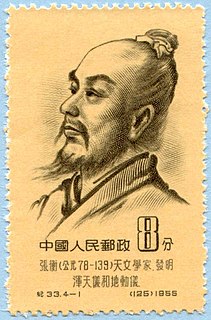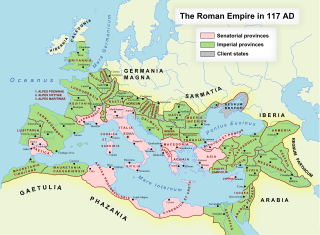AD 68 (LXVIII) was a leap year starting on Friday of the Julian calendar. At the time, it was known as the Year of the Consulship of Silius Italicus and Trachalus, or the start of the Year of the Four Emperors. The denomination AD 68 for this year has been used since the early medieval period, when the Anno Domini calendar era became the prevalent method in Europe for naming years. These are now used throughout the world.
The 90s ran from 90 AD to 99 AD.
The 100s decade ran from January 1, 100, to December 31, 109.
The 110s decade ran from January 1, 110, to December 31, 119.
The 120s decade ran from January 1, 120, to December 31, 129.

Year 125 (CXXV) was a common year starting on Sunday of the Julian calendar. At the time, it was known as the Year of the Consulship of Paullinus and Titius. The denomination 125 for this year has been used since the early medieval period, when the Anno Domini calendar era became the prevalent method in Europe for naming years.
The 320s decade ran from January 1, 320, to December 31, 329.

AD 100 (C) was a leap year starting on Wednesday of the Julian calendar. In the Roman Empire, it was sometimes referred to as year 853 ab urbe condita, i.e., 853 years since the founding of Rome in 753 B.C. The denomination AD 100 for this year has been used since the early medieval period, when the Anno Domini calendar era became the prevalent method in Europe for naming years.
Year 101 (CI) was a common year starting on Friday of the Julian calendar. At the time, it was known as the Year of the Consulship of Traianus and Paetus. The denomination 101 for this year has been used since the early medieval period, when the Anno Domini calendar era became the prevalent method in Europe for naming years.
Year 102 (CII) was a common year starting on Saturday of the Julian calendar. At the time, it was known as the Year of the Consulship of Ursus and Sura. The denomination 102 for this year has been used since the early medieval period, when the Anno Domini calendar era became the prevalent method in Europe for naming years.
The 130s decade ran from January 1, 130, to December 31, 139.
The 160s decade ran from January 1, 160, to December 31, 169.
The 180s decade ran from January 1, 180, to December 31, 189.
Year 115 (CXV) was a common year starting on Monday of the Julian calendar. In the Roman Empire, it was known as the Year of the Consulship of Messalla and Vergilianus. The denomination 115 for this year has been used since the early medieval period, when the Anno Domini calendar era became the prevalent method in Europe for naming years.

Year 117 (CXVII) was a common year starting on Thursday of the Julian calendar. At the time, it was known as the Year of the Consulship of Niger and Apronianus. The denomination 117 for this year has been used since the early medieval period, when the Anno Domini calendar era became the prevalent method in Europe for naming years.
Year 119 (CXIX) was a common year starting on Saturday of the Julian calendar. At the time, it was known as the Year of the Consulship of Hadrianus and Rusticus. The denomination 119 for this year has been used since the early medieval period, when the Anno Domini calendar era became the prevalent method in Europe for naming years.

Year 250 (CCL) was a common year starting on Tuesday of the Julian calendar. At the time, it was known as the Year of the Consulship of Traianus and Gratus. The denomination 250 for this year has been used since the early medieval period, when the Anno Domini calendar era became the prevalent method in Europe for naming years.
Year 340 (CCCXL) was a leap year starting on Tuesday of the Julian calendar. At the time, it was known as the Year of the Consulship of Acindynus and Valerius. The denomination 340 for this year has been used since the early medieval period, when the Anno Domini calendar era became the prevalent method in Europe for naming years.



